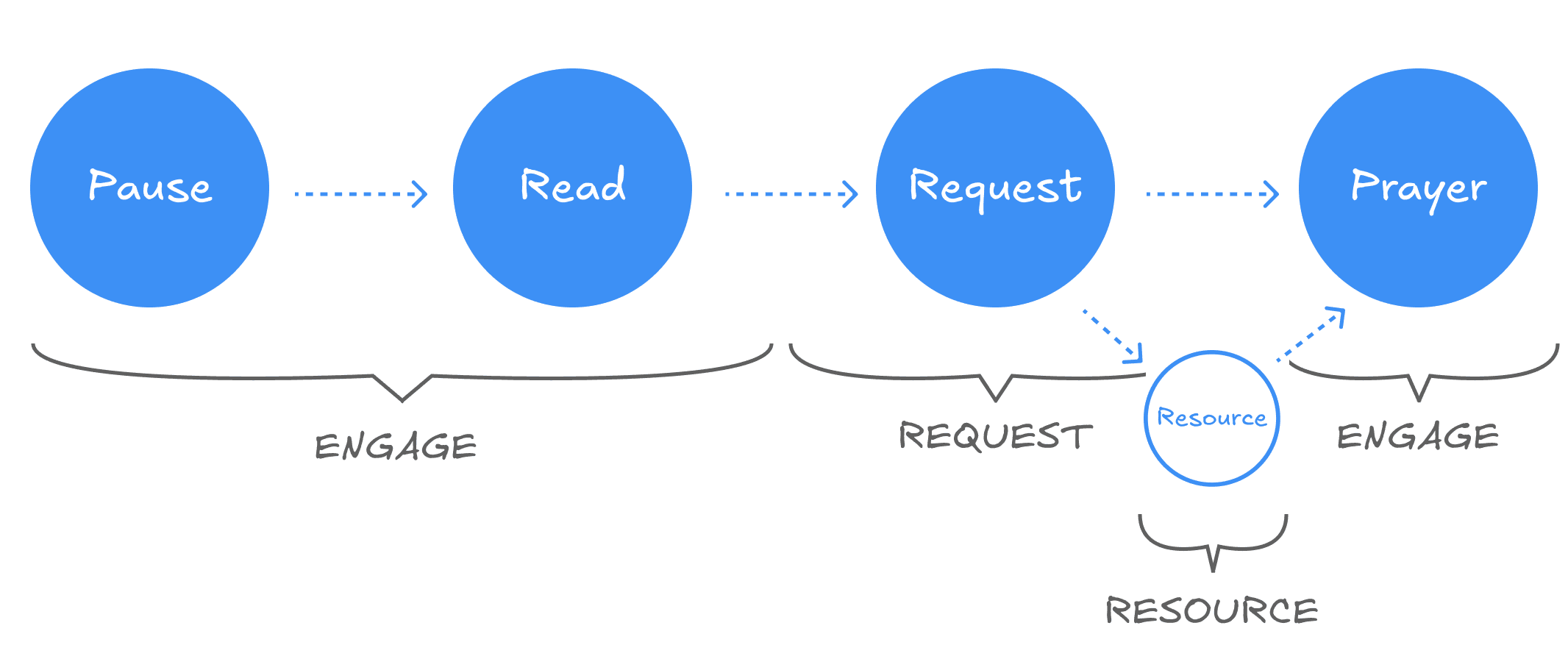This is my notebook.
Why I don’t like prayer request forms
The pastoral implications of our technical choices
01. INTRODUCTION
I've been at my current church for just over a year. One of my favorite things we do as a staff is sit down each Tuesday and pray for every single prayer request. It's a beautiful thing for the whole staff to be a part of.
And how do we collect these prayer requests? A form (both paper and digital).
These forms aren't necessarily bad, but I think they're missing something.
02. EVERYTHING IS THEOLOGICAL
Everything we do in ministry is inherently theological.
Windows in a sanctuary can communicate our lack of control over an environment. As light pours in or a cloud dims the room, we remember that we have less control than we think we do.
Having Scriptures only on a screen can unintentionally communicate that what is being read is isolated and context free. Reading from a pew Bible helps the reader remember that there is more going on than just what's being preached.
These things are small and they aren't inherently bad. A dark room lets you create environments that engage people's God-given emotions like any other form of Christian art is designed to do. Having Scriptures on the screen helps people follow along with the teaching who might not know where the book of Obadiah is. (Plus, the preacher will move on before they get there).
Not bad things at all. But there is a theological message hidden in there.
So what’s the message with prayer request forms?
03. AN ATTEMPT
Back when I was at Hillsong, we received thousands of prayer requests per month through our online forms. All were routed to the appropriate campus or ministry for follow up. From there, a pastor would call them or email them back.
It was a nice system, but I felt like it was missing something. The form let us collect information, but no where in the process did we encourage the person requesting prayer to engage with God themselves.
We don't just need to share a need and ask someone to pray for us (though of course we should do this), but we ourselves get to join into that moment with our loving Father who wants to meet with us.
Prayer request forms make me think more of my need than my God. It can feel more like wishing than engaging in dialectic prayer.
Before leaving Hillsong, I played around with an idea. Instead of a simple form on a site, it was a multi-step journey. A time of prayer rather than an empty textarea and a blinking cursor.
You were first invited to pause, quiet your heart, and let God meet you in any anxieties you have. This was followed by reading a short scripture.
Then you would be able to put in your prayer request. But before you hit submit, you were asked to pray for your own need as well.
The team would still get all these submissions and be able to follow them up, but these small tweaks changed the tone of the whole experience from input to encounter.
I also set up some keywords and phrases to listen for any signs that the person needed immediate care. If they did, we showed the appropriate support hotline number to the person. We wanted to put a resource in a person's hand right away so they didn't have to wait for a pastor reach out (though they would do that as well).
Combine this with another idea someone on the team shipped: a digital prayer wall. Now in submitting your request, you had a time of prayer, got resources you needed, and you got to engage in prayer for others while they did the same for you.
A prayer form turns into a time of prayer and an act of community.

04. CONCLUSION
While this didn't go live before I left staff, I still think there's something to it. If nothing else, it's a reminder to me that seemingly small technical design decisions have theological implications.
Digital will never be a 1:1 of an in-person experience. Laying on of hands can't happen through a screen. But that doesn't dismiss the medium as a whole. We just have to be a bit more thoughtful about what we build.
More
Churches Need Paper Forms
Starting over from first principles to meet real needs
Answer questions that bring you joy
A simple heuristic for the next step
On Planning Center Home
The meta-layer of Planning Center
Do I really need 14 apps to join the team?
Who’s going to build Notion for Churches?
Notes on Craft and Quality
The companies that have helped me shape Church Space
If you'd like to get updates on my writing, you can subscribe to my newsletter here.